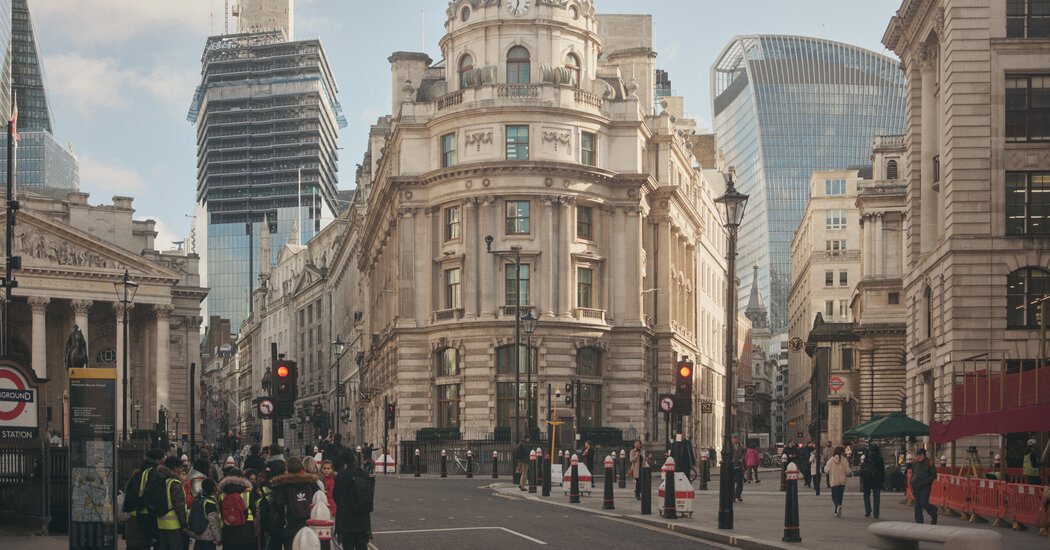Investors Are Calling It: The Federal Reserve May Be Done Raising Rates
Investors are betting that the Federal Reserve, which has raised interest rates to their highest levels in 22 years, may finally be finished.
Several top Fed officials have indicated in recent days that the central bank’s effort to cool the economy through higher borrowing costs is being amplified by recent market moves that are essentially doing some of that job for them.
In particular, attention has focused on a run-up in interest rates on U.S. government debt, with the yield on the 10-year Treasury bond briefly touching a two-decade high last week. That yield is incredibly important because it acts as the market’s foundation, underpinning interest rates on many other types of borrowing, from mortgages to corporate debt, and influencing the value of companies in the stock market.
Philip N. Jefferson, the vice chair of the Fed, said this week that although “it may be too soon to say confidently that we’ve tightened enough,” higher market rates can reduce how much businesses and households spend while depressing stock prices. He added that the Fed wanted to avoid doing too much and hurting the economy unnecessarily.
Given that, he said the Fed “will be taking financial market developments into account along with the totality of incoming data in assessing the economic outlook.”
Investors have sharply reduced expectations of another rate increase before the end of the year. They see about a one-in-four chance that policymakers could lift rates again.
“If financial conditions are tightening independent of expectations for monetary policy” then “that will reduce economic activity,” said Michael Feroli, the chief U.S. economist at J.P. Morgan. “Things change, you change your forecast.”
Investors have expected the Fed to stop raising interest rates before and been proven wrong. There is still a chance now that the market dynamics that are helping to raise borrowing costs could reverse, and this week, some of the recent pop in the yield on 10-year bonds has eased. But if market rates stay high, it could keep adding to the substantial increase in borrowing costs the Fed had already ushered in for consumers and companies.
The Fed has raised its key interest rate from near zero to above 5.25 percent over the past 19 months in an attempt to tame inflation. But the Fed directly controls only very short-term rates. It can take a while for its moves to trickle through the economy to affect longer-term borrowing costs — the kind that influence mortgages, business loans and other areas of credit.
There are likely several reasons those longer term rates in markets have climbed sharply over the past two months. Wall Street may be coming around to the possibility that the Fed will leave borrowing costs set to high levels for a long time, economic growth has been strong, and some investors may be concerned about the size of the nation’s debt.
Over time, the rise in yields on Treasury bonds is likely to weigh on the economy, and Fed officials have been clear that it could do some of the work of further raising interest rates for them.
Officials had forecast in September that they might need to make one more rate move this year. But comments by Mr. Jefferson, along with some of the Fed’s more inflation-focused members have been widely seen as a signal that the Fed is likely to be more cautious.
Christopher J. Waller, a Fed governor who has often favored higher rates, said at an event on Wednesday that officials were in a position to “watch and see” what happens, and would keep a “very close eye” on the move and “how these higher rates feed into what we’re going to do with policy in the coming months.”
Lorie K. Logan, president of the Federal Reserve Bank of Dallas, said on Monday that higher market yields “could do some of the work of cooling the economy for us, leaving less need for additional monetary policy tightening.”
But she noted that it would depend on why rates were rising. If they had climbed because investors wanted to be paid more to shoulder the risk of holding long-term bonds, the change was likely to squeeze the economy. If they had climbed because investors believed the economy was capable of growing more strongly even with high rates, it would be a different story.
Even Michelle W. Bowman, a Fed governor who tends to favor higher rates, has softened her stance. Ms. Bowman said on Oct. 2 that further adjustment would “likely be appropriate.” But in a speech she delivered on Wednesday, that wording was less definitive: She said policy rates “may need to rise further.”
The softer tone among Fed officials appears to have helped halt the rise in market rates, with the yield on the 10-year Treasury bond easing 0.2 percentage points so far this week. On Tuesday, the yield fell by the most in a day since the turmoil induced by the banking crisis in March. That likely reflected investors who rushed to the safety of U.S. government debt as war broke out in Israel and Gaza. Still, the yield remains around 4.6 percent, roughly 0.8 percentage points higher than at the start of July.
“It seems like there is a little skittishness,” said Subadra Rajappa, head of U.S. rates strategy at Société Générale.
Higher interest rates also typically weigh on stock prices, with major indexes under pressure over the summer alongside the rise in yields. The S&P 500 suffered its worst month of the year through September but has risen 2 percent so far this month, alongside retracing yields.
Policymakers will get another read on the effect of rate rises with the release of the Consumer Price Index on Thursday. Economists expect the data to show a gradual slowdown in inflation is continuing, despite the unexpected resilience of the economy.
That could change, however, especially if yields continue to fall, relieving some of the pressure on the economy.
A robust economy could keep the possibility of another Fed rate move alive, even if investors see it as unlikely. Ms. Logan warned that policymakers should avoid overreacting to market moves if they quickly fade.
And Neel Kashkari, president of the Federal Reserve Bank of Minneapolis, said on Tuesday that long-term rates might have moved up in part because investors expected the Fed to do more. Therefore, if the Fed signals that it will be less aggressive, they could retreat.
“It’s hard for me to say definitively — hey, because they have moved, therefore we don’t have to move,” Mr. Kashkari said. “I don’t know yet.”


